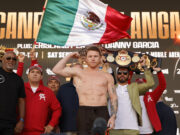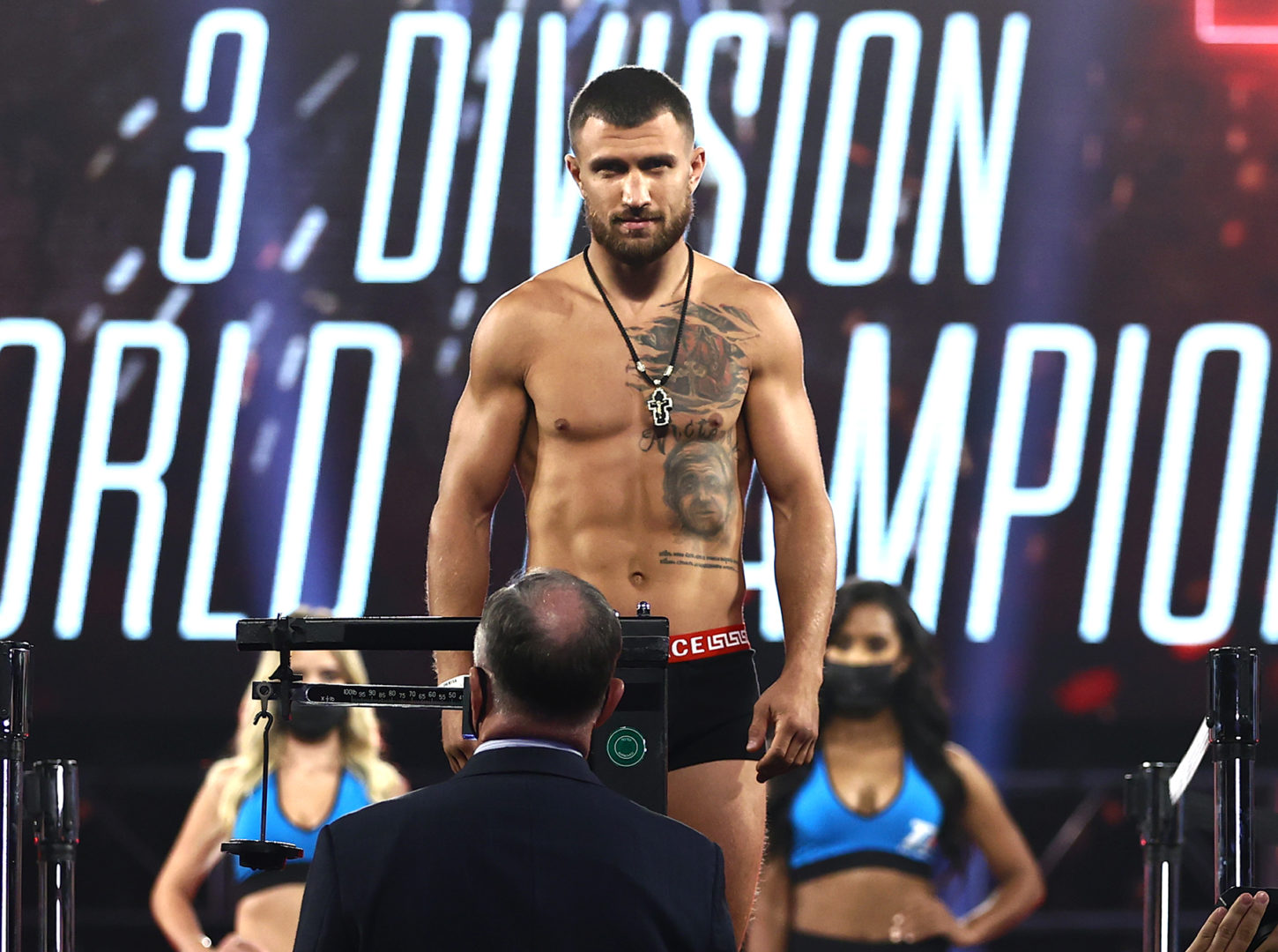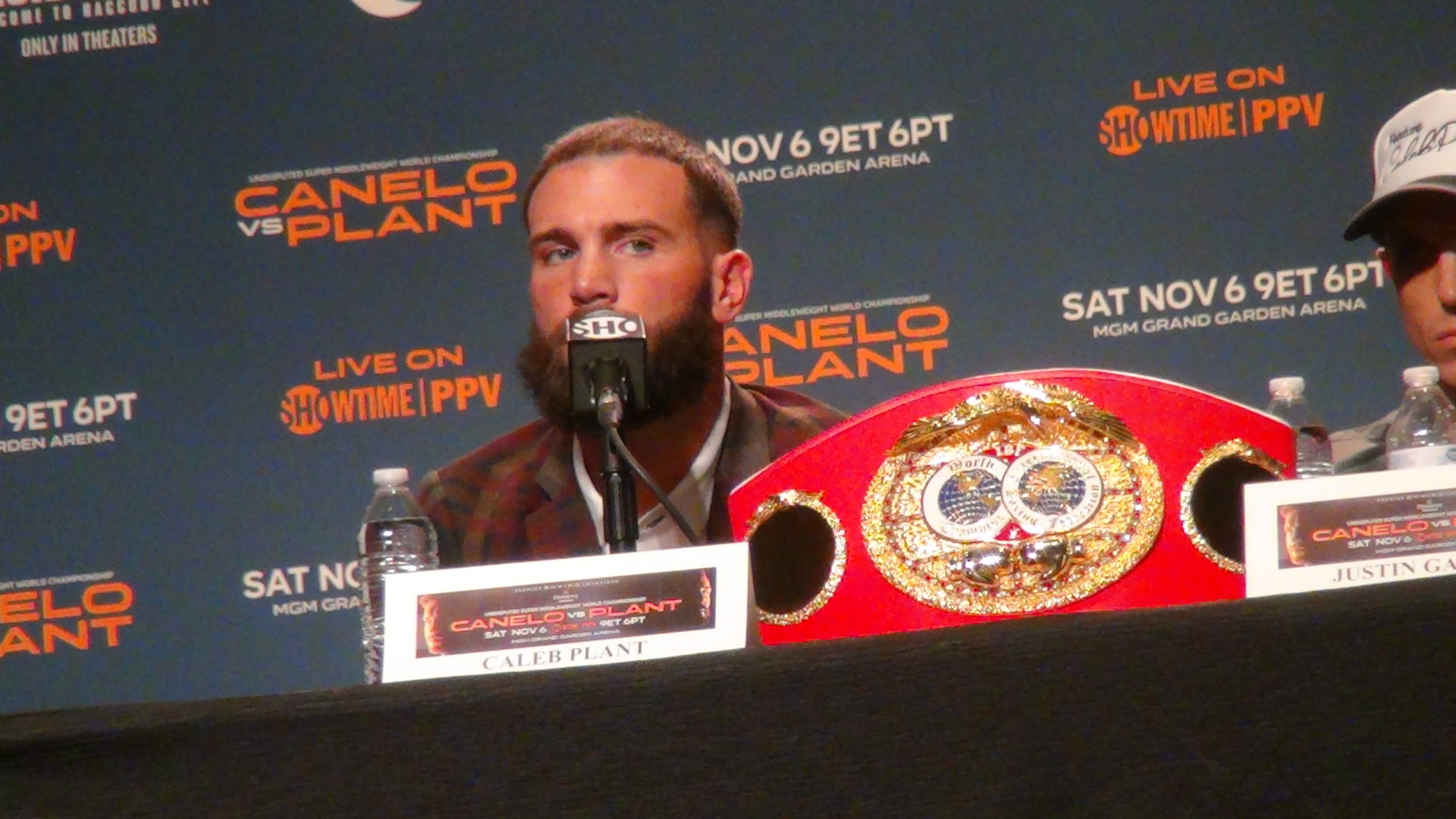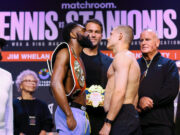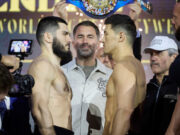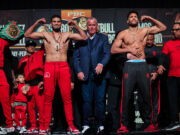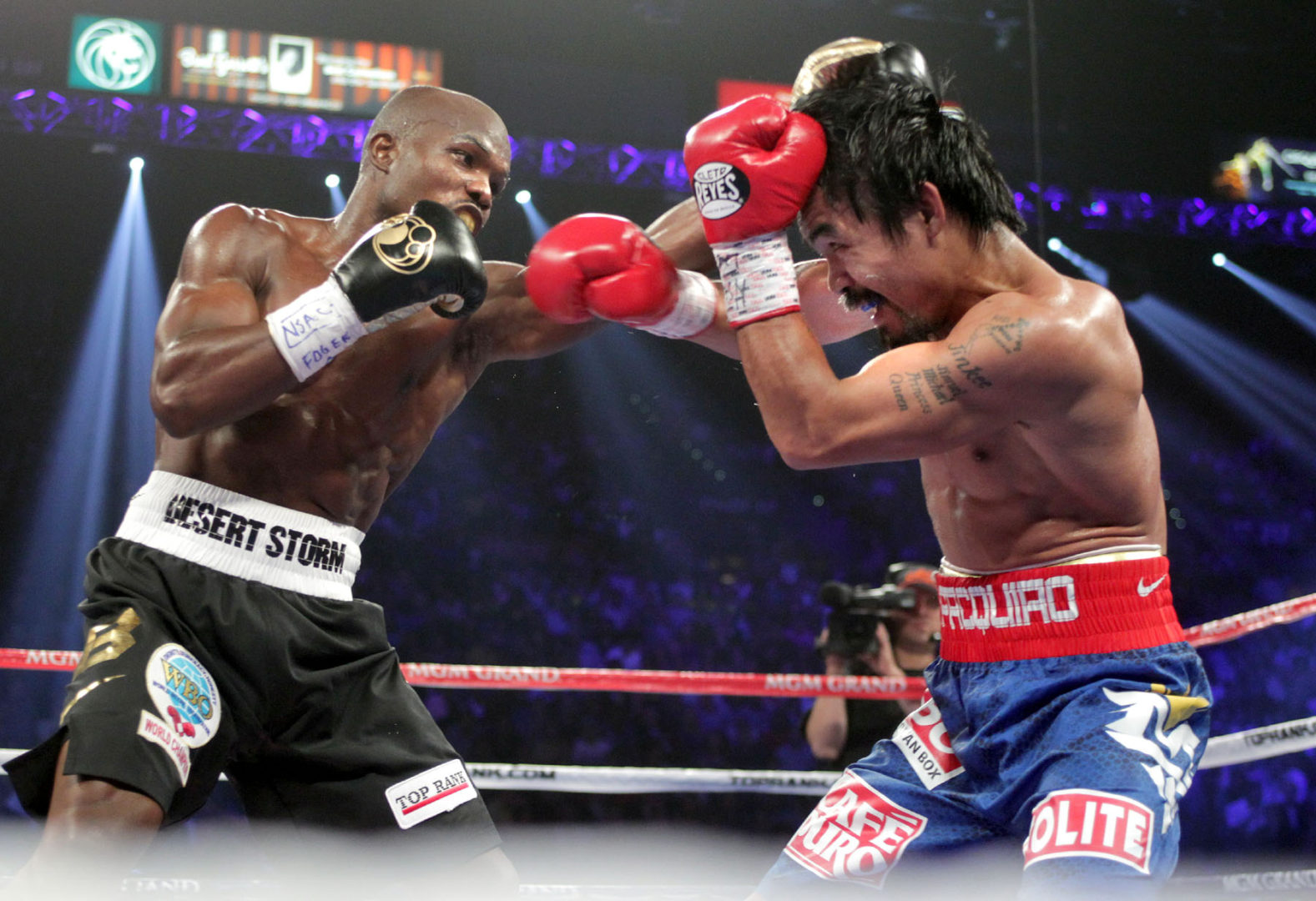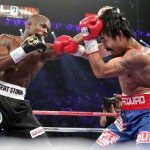
LAS VEGAS – The Bellagio Gallery of Fine Arts, a short cab ride from the week’s poorly cooled and hastily erected media tent outside MGM Grand Garden Arena, currently features an exhibition called “Claude Monet: Impressions of Light.” It has its charms, featuring much of Monet’s early work – dash of orange here, square of blue there – but is for the most part unremarkable, save one quote from the Impressionist master: “I allow plenty of faults to show in order to fix my sensations.” Let that guide what follows.
Saturday at MGM Grand, Timothy Bradley decisioned Manny Pacquiao by split scores – 115-113, 115-113 and 113-115 – that infuriated most observers. Bradley, later wheeled into the media center with a foot he may have broken in round 2 and fought on anyway for a half hour, was gracious in victory, promising his vanquished foe an immediate rematch. Pacquiao, face unmarked, was gracious in defeat, reminding those gathered how many blessings boxing bestowed on him. Bradley’s and Pacquiao’s, though, were examples of graciousness ignored by most everyone else.
In a nod to what Monet was after above, there were faults aplenty in the impressions caused by the lights of our beloved sport, Saturday. The judges, unique among those at ringside for being paid to be competent at scoring, determined, collectively, the fight’s result was extraordinarily difficult to discern. Only five of the match’s 12 rounds were seen unanimously for one fighter or the other. If that formed a conspiracy, it was at least a conspiracy degrees more sophisticated than boxing’s usual antics.
My ringside scorecard had Bradley by a point, 116-115. I gave the new champion rounds 2, 6, 7, 11 and 12. I gave Pacquiao rounds 3, 4, 9 and 10. I scored rounds 1, 5 and 8 even. Am I entirely confident of my card’s accuracy? Actually, no. I marked with an asterisk five rounds as either/or affairs, and I scored another three even. But I am certain of my card’s truthfulness – another thing Monet was after. Despite sitting ringside for no fewer than 400 prizefights during my time as a boxing writer, I was not at all sure of what I was seeing Saturday night. Which raises a genuine suspicion for me about the origin of others’ loud certainty.
Three professional judges disagreed seven of 12 times. Reasonable writers at MGM Grand, intelligent men with proven cognitive aptitudes, colored a wide array with their opinions. The only ones sure of their infallibility were a few usual suspects at ringside, compensated for what they know more than what they discover, and the entire HBO pay-per-view audience.
Let that be a commentary on the viewing experience, not the reality, and know better than to demand of ringsiders a review of Saturday’s telecast to find the wrong of their ways. We were there, friends; we know what we saw, and what we saw was the real thing, unfiltered, thanks.
Timothy Bradley did not fight well as even his supporters believed he would need to fight to beat Pacquiao. Hobbled and often unexpectedly reluctant, Bradley followed a questionable counterpunching strategy designed in his camp to preclude him from being the Ricky Hatton-redux Pacquiao prepared for. And Pacquiao, to his credit, fought considerably better than most anticipated he would.
There was a tone of disbelief in the media center at the postfight press conference. Part resulted from having not seen Pacquiao lose in 15 highly visible fights. There was confusion, a product of the result’s unusualness. Pacquiao lost to Marquez by a much wider margin than this in November, the thinking went, and he got that decision. This, therefore, is an outrage.
To score a fight impartially, one must look at the neutral plane between the fighters and follow any punch that enters that plane to its destination. Does anyone do this? No. Scorers select a narrative, often not consciously – “Pacquiao will catch Bradley coming in with those wide punches and beat him down,” say – and look to see it disproved, if they’re scientific, or proved (if they’re human). With few exceptions, Saturday’s fight showed an observer whatever he was looking for. If a scorer believed that Pacquiao, returned to his wildman and free-hurling ways, could hurt Bradley with most any punch he landed, he saw that every time Bradley swung his upper body like a windshield wiper. If a scorer believed that Bradley, quicker of reflex and less relenting than Pacquiao’s recent opponents, could grind the underconditioned Congressman to exhaustion in the championship rounds, he saw that instead.
More observers looked for Pacquiao to win. More observers saw Pacquiao win.
Pacquiao did catch Bradley with left uppercuts, though not nearly as many as he should have with a guy who put his chin on a tee every time he ducked rightwards. And the only time Pacquiao had Bradley in distress was when he flurried crazily with 10 obtusely angled punches, and four or five landed.
Bradley kept his right hand high – no Hatton redux, he – fought Pacquiao off him, held when he had to, and closed stronger than Pacquiao, confirming many prefight worries about the Filipino’s once-vaunted conditioning. Bradley also landed several punches, like a right cross in the fight’s opening 90 seconds, the partisan-Pacquiao crowd took no account of.
Promoter Bob Arum donned his performance garb in the media center afterwards, took an oath – a few oaths really – to ensure a rematch on November 10, and protested mightily the fight’s official outcome. Were this Shakespeare, in fact, Hamlet’s mother would have said Arum protested a bit too much.
Bart Barry can be reached at bart.barrys.email (at) gmail.com



